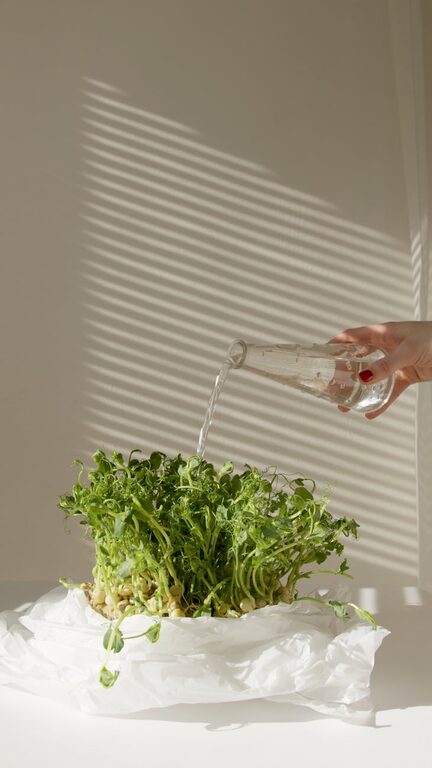Bringing houseplants into your living space adds natural beauty and a touch of tranquility. However, keeping them healthy can sometimes feel challenging, especially if you’re new to plant care. With the right knowledge and a little attention, your indoor plants can thrive, purify your air, and brighten your home for years to come.
In this post, we’ll walk you through simple, effective tips to maintain vibrant and flourishing houseplants.
Understand Your Plant’s Needs
Different plants have different requirements. The first step to keeping houseplants healthy is learning about the specific needs of each plant you own.
Light Requirements
Plants have varying light preferences:
– Bright light lovers: Plants like succulents and cacti thrive near windows with plenty of sunlight.
– Low light tolerant: Pothos, snake plants, and ZZ plants do well in moderate or indirect light.
– Partial shade: Some ferns and calatheas prefer filtered sunlight or shaded spots.
Place your plants accordingly, and consider rotating them periodically so all sides receive balanced light.
Watering Needs
Overwatering is one of the most common mistakes. Each plant has unique watering needs:
– Check the top 1-2 inches of soil; if dry, it’s usually time to water.
– Avoid letting plants sit in standing water.
– Use pots with drainage holes to help excess water escape.
– Some tropical plants prefer moisture consistently, while succulents like to dry out completely between watering.
Use the Right Soil and Pot
Good soil and an appropriate container play a big role in healthy plant growth.
Choosing the Soil
– Use well-draining soil suitable for your plant type.
– Mixes for succulents differ from those for tropical plants or orchids.
– Consider adding perlite or sand to improve drainage in standard soil mixes.
Selecting Pots
– Ensure your pot has drainage holes.
– Material matters too; terracotta pots absorb moisture, which is great for plants prone to overwatering.
– Avoid too-large pots as excess soil can hold too much moisture and lead to root rot.
Maintain Proper Humidity and Temperature
Houseplants generally prefer consistent temperatures between 65-75°F (18-24°C). Avoid placing plants near cold drafts, heaters, or air conditioners.
Some plants, especially tropical ones, appreciate higher humidity levels. If your home is dry:
– Use a humidifier near clusters of plants.
– Group plants together to create a microclimate.
– Mist leaves occasionally but avoid excess moisture that could promote fungal issues.
Regular Cleaning and Pruning
Plants can collect dust on their leaves, which reduces photosynthesis.
Leaf Cleaning
– Wipe leaves gently with a damp cloth every couple of weeks.
– For plants with many little leaves, a gentle shower with lukewarm water works well.
Pruning
– Remove dead or yellowing leaves promptly to keep plants healthy and encourage new growth.
– Trim leggy stems to maintain shape and encourage bushier growth.
Fertilize Appropriately
Plants need nutrients beyond what soil provides. Fertilizing helps replenish essential minerals.
– Use a balanced, water-soluble fertilizer during the growing season (spring and summer).
– Follow the package instructions to avoid over-fertilizing, which can harm plants.
– Many plants rest in winter and may require reduced or no fertilization during these months.
Watch for Pests and Diseases
Houseplants can attract pests like spider mites, aphids, or fungus gnats.
– Inspect plants regularly, especially undersides of leaves.
– If you notice pests, isolate the affected plant.
– Treat infestations with natural remedies, such as insecticidal soap or neem oil, rather than harsh chemicals.
Identifying problems early helps stop them before they spread.
Tips for Repotting
Repotting refreshes soil and gives growing plants more space.
– Repot when roots begin to grow out of drainage holes or the plant becomes root-bound.
– Choose a pot that is 1-2 inches larger in diameter than the current pot.
– Handle roots gently and remove any that look dead or rotten.
– Repot in spring or early summer, avoiding stressful repotting during dormant periods.
Create a Routine
Consistency is key to plant health. Create a care schedule tailored to your plants that includes:
– Checking light and water needs weekly.
– Cleaning leaves monthly.
– Fertilizing during growth periods.
– Inspecting for pests regularly.
Keeping a simple journal or using phone reminders can help you stay on top of your plants’ needs.
—
By understanding your houseplants and providing care tailored to their unique needs, you’ll nurture thriving greenery that elevates both your space and your mood. Whether you’re a seasoned plant lover or just beginning your indoor garden journey, these tips can make your plant care routine easier and more enjoyable. Happy gardening!

